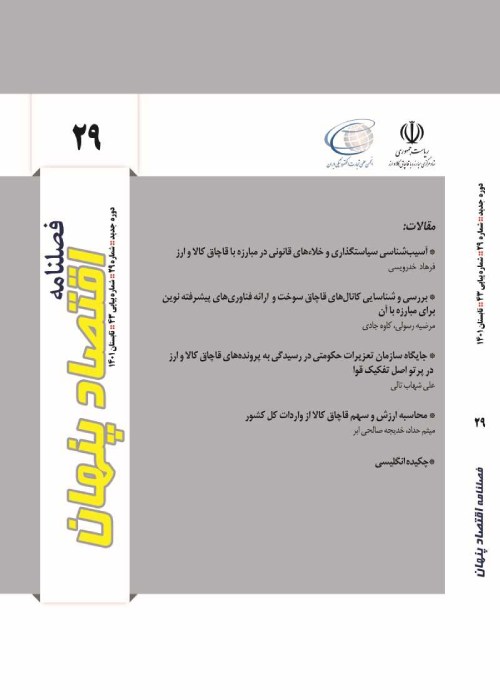Investigating the Legislative Challenges of Commodity and Currency Smuggling in the Light of Iran's Criminal Law System
Smuggling, as one of the most important elements of the hidden economy, has always caused a lot of damage to the healthy economy and dynamism of the countries of the world. One of the most important crimes that have openly, directly and for a long time undermined the security of the country is the phenomenon of smuggling of goods and currency, which has also negatively affected various social, economic, political and cultural spheres of the country. Is; At present, smuggling of goods and currency has become a serious and threatening problem in the country's economy, so that combating it is one of the priorities of the three powers. With the passage of the Law on Combating Commodity and Currency Smuggling adopted in 2013, new horizons were opened in terms of preventing and combating the harmful phenomenon of commodity and currency smuggling, and significant innovations were revealed in this law. However, we always face many ambiguities in this area, which has challenged the prevention and confrontation of this ominous phenomenon; Therefore, the leading article examines the ambiguities and legislative challenges of progress in this law with a descriptive-analytical method and library collection tools. The findings of the study indicate that instability in the legislature, disproportion between crimes and punishments, criminal approach to trafficking and ambiguity in the psychological element, etc. are among the most important ambiguities in this law
- حق عضویت دریافتی صرف حمایت از نشریات عضو و نگهداری، تکمیل و توسعه مگیران میشود.
- پرداخت حق اشتراک و دانلود مقالات اجازه بازنشر آن در سایر رسانههای چاپی و دیجیتال را به کاربر نمیدهد.


